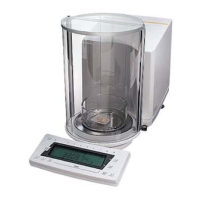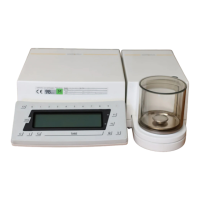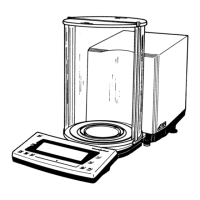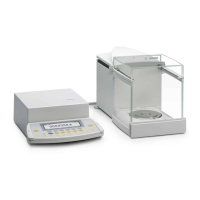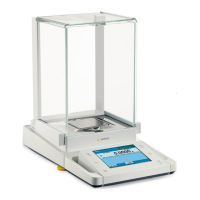Weighing Magnetic or Magnetizable Samples
It is technically impossible to avoid the use
of magnetizable materials in the manufacture
of balances. Ultimately, the operating principle
of high-resolution balances is based
on electromagnetic force compensation of the load
placed on the weighing pan.
When magnetic or magnetizable samples
or containers (e.g., beaker with a stirrer) are weighed,
interactions among the above-mentioned
components of the balance may occur, distorting
weight readouts.
Unlike deviations caused by electrostatic charges,
magnetic interference is usually constant over
time. However, it is sensitive to and depends on the
position of the sample or container on the
weighing pan and is also characterized by poor
reproducibility.
To reduce the effect described above, we recommend
increasing the distance between the sample and
the weighing pan by using a non-magnetizable
material (the reduction in force is proportional to the
quadrate of the distance). In special cases,
soft-magnetic plates should be used to shield against
interfering magnetic effects.
In the presence of extremely strong magnetic fields –
for instance, when measuring the susceptibility
of a sample in an electromagnet – you should use
the below-balance weighing port which comes
standard on your balance.
1–17

